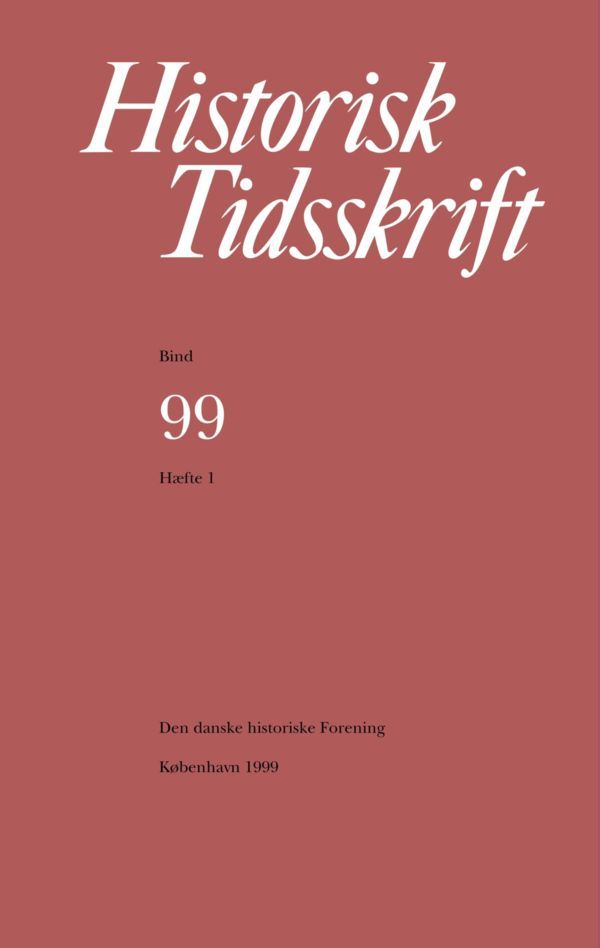Kan lægeløftet gradbøjes? Dødsfald blandt og lægehjælp til de tyske flygtninge i Danmark 1945
Resumé
Is There any Limit to the Hippocratic Oath? Deathrates and Medical Care of the German Refugees in Denmark 1945In the last chaotic months of World War II, 200.000 German refugees, including 70.000 children under the age of 15, were sent to occupied Denmark from the eastern provinces of Germany. The Danish officials refused to take care of the refugees. They handed them over to the German Wehrmacht and forced the German officials to confiscate buildings and foods for the refugees. The Germans tried to persuade the Danes to offer medical treatment to the miserable refugees and the negotiations between the Danish doctors and the Danish officials and between the Danes and the Germans are revealed in this paper. The head of the unofficial Danish 'government' by the permanent under-secretaries, Nils Svenningsen, and the chairman of the Danish medical association, Mogens Fenger, advocated for a bargain with the Germans. In return for medical attendance to the refugees, the Danish gendarmes and policemen, who were deported to German concentration camps, should be sent back to Denmark. But strong fractions of the medical association, The National Board of Health and the Danish Liberation Council were opposed to any negotiations with the Germans. The conclusion was, that only refugees who suffered from the diseases, typhoid and paratyphoid fever, dysentery and spotted fever, which could threaten the Danish population, were treated by Danish doctors and in Danish hospitals. All other German patients were left in their lodgings or were sent to the German Wehrmachtlazaretten, which were quite unable to manage the great number of patients. The life-threatening diseases which many of the small children were suffering from (such as measles, gastroenteritis and malnutrition), were not included in those diseases, which the Danish doctors had agreed on treating. That turned out to be fatal for thousands of children. After the German capitulation Denmark kept the German Wehrmacht-doctors in internment in Denmark against international conventions, in order to treat the German refugees. The statistics of mortality and morbidity for the refugees 1945 are very incomplete, because the health authorities at that time decided not to collect data. In this paper, therefore, I have from very different sources tried to collect available data. More than 13.000 refugees died in 1945 in Denmark and almost 7.000 children under the age of 5 died. When a census of the refugees was done in August 1946, probably most of the children under the age of 2 had died. It is of course not possible to tell exactly how many children under the age of 5 would have died, if the Danish doctors had intervened and offered them proper medical treatment, but it is my opinion, that most of them would have survived. In 1945 public opinion was against any help to the Germans, even to the small children, and the Danish medical profession was with a few exceptions of the same opinion.Downloads
Publiceret
Citation/Eksport
Nummer
Sektion
Licens
Ophavsret til bidrag i Historisk Tidsskrift tilhører forfatterne og Den danske historiske Forening som udgiver af Historisk Tidsskrift. For illustrationer gælder den ophavsret, som står anført i billedteksten. Ophavsretslovens almindelige bestemmelser gælder, hvilket vil sige, at ophavsretten gælder i 70 år efter forfatterens død. Bidrag i Historisk Tidsskrift må derfor, med forbehold for en ”moving wall” på tre år, frit downloades, læses, gemmes, anvendes og citeres (med kildeangivelse) i privat og videnskabelig sammenhæng, men de må ikke helt eller delvis genudgives af tredjepart, heller ikke i redigeret form, uden tilladelse fra forfatterne og Den danske historiske Forening. Henvendelse skal i så fald rettes til Historisk Tidsskrifts redaktion på histtid@hum.ku.dk.





